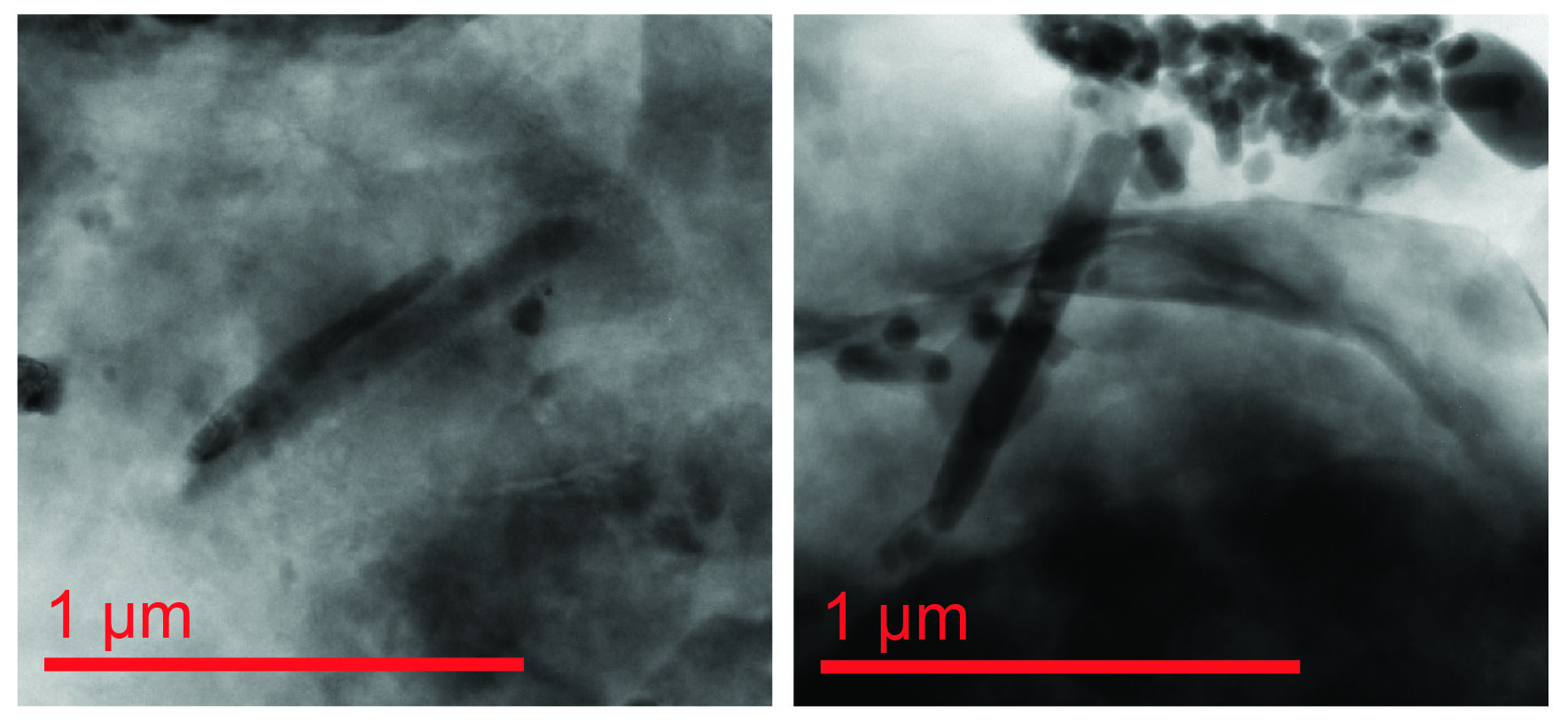
[ad_1]

Electron microscope images of giant needles. The needles have a cylindrical shape and some tapers towards one end of the crystal. Credit: Courtney Wagner, Ioan Lascu and Kenneth Livi.
There are fossils, found in ancient marine sediments and composed of just a few magnetic nanoparticles, that can tell us a lot about the climate of the past, especially episodes of brutal global warming. Now, researchers, including doctoral student Courtney Wagner and University of Utah Associate Professor Peter Lippert, have found a way to glean the valuable information from these fossils without having to crush the rare samples into a fine powder. Their results are published in Proceedings of the National Academy of Sciences.
“It’s so much fun to be part of a discovery like this, something that can be used by other researchers studying magnetofossils and intervals of planetary change,” says Wagner. “This work can be used by many other scientists, inside and outside our specialist community. It is very exciting and enriching.”
The name “magnetofossil” may conjure up images of the X-Men, but the reality is that magnetofossils are microscopic bacterial iron fossils. Some bacteria produce magnetic particles 1 / 1,000 the width of a hair which, when assembled into a chain inside the cell, acts like a compass on the nanoscale. Bacteria, known as “magnetotactic bacteria,” can then use this compass to align with Earth’s magnetic field and effectively move to their preferred chemical conditions in the water.
During a few periods of Earth’s past, in the early and mid-Eocene epoch, 56 to 34 million years ago, some of these biologically produced magnets grew to “giant” sizes, about 20 times larger than typical magnetofossils, and in exotic shapes such as needles, spindles, spearheads and giant bullets. Because the bacteria used their magnetic supersense to find their preferred levels of nutrients and oxygen in ocean water, and because giant magnetofossils are associated with periods of rapid climate change and high global temperature. , they can tell us a lot about ocean conditions during this rapid warming, and especially how those conditions have changed over time.
Previously, the extraction and analysis of these fossils required grinding the samples into a fine powder for imaging by electron microscopy. “The extraction process can be long and unsuccessful, electron microscopy can be expensive, and destruction of samples means they are no longer useful for most other experiments,” says Wagner. “Collecting and storing these samples requires specialized personnel, equipment and planning, so we want to save as much material as possible for further studies.”
So Wagner, Lippert and their colleagues, including Ramon Egli of the Central Institute of Meteorology and Geodynamics and Ioan Lascu of the National Museum of Natural History, found another way. Using sediment samples collected in New Jersey, they devised a new way to conduct an analysis called FORC (First Order Inversion Curve) measurements. Through these high-resolution magnetic measurements, they discovered that the magnetic signature of the giant magnetofossils was distinctive – enough that the technique could be used in other samples to identify the presence of the fossils. “FORC measurements probe the reaction of magnetic particles to externally applied magnetic fields, making it possible to distinguish between different types of iron oxide particles without actually seeing them,” explains Egli.
“The ability to quickly find giant magnetofossil assemblages in geological records will help identify the origin of these unusual magnetofossils,” the researchers write, as well as the ecology of the organisms that formed them. This is important, says Wagner, because no known living organism today forms giant magnetofossils, and we still do not know which organisms formed them in the past. “The organisms that produced these giant magnetofossils are totally mysterious, but this leaves exciting research avenues open for the future,” Lascu adds.
Beyond that, however, the information in magnetofossils helps scientists understand how the oceans have responded to past climate change and how our current ocean might respond to continued warming.
Microbiologists discover key protein to control cell form of magnetic bacteria
Courtney L. Wagner et al., “In situ magnetic identification of giant needle-shaped magnetofossils in Paleocene – Eocene peak thermal sediments,” PNAS (2021). www.pnas.org/cgi/doi/10.1073/pnas.2018169118
Provided by the University of Utah
Quote: Mysterious Magnetic Fossils Offer Past Climatic Clues (2021, February 1) Retrieved February 2, 2021 from https://phys.org/news/2021-02-mysterious-magnetic-fossils-climate-clues.html
This document is subject to copyright. Other than fair use for private study or research purposes, no part may be reproduced without written permission. The content is provided for information only.
[ad_2]
Source link